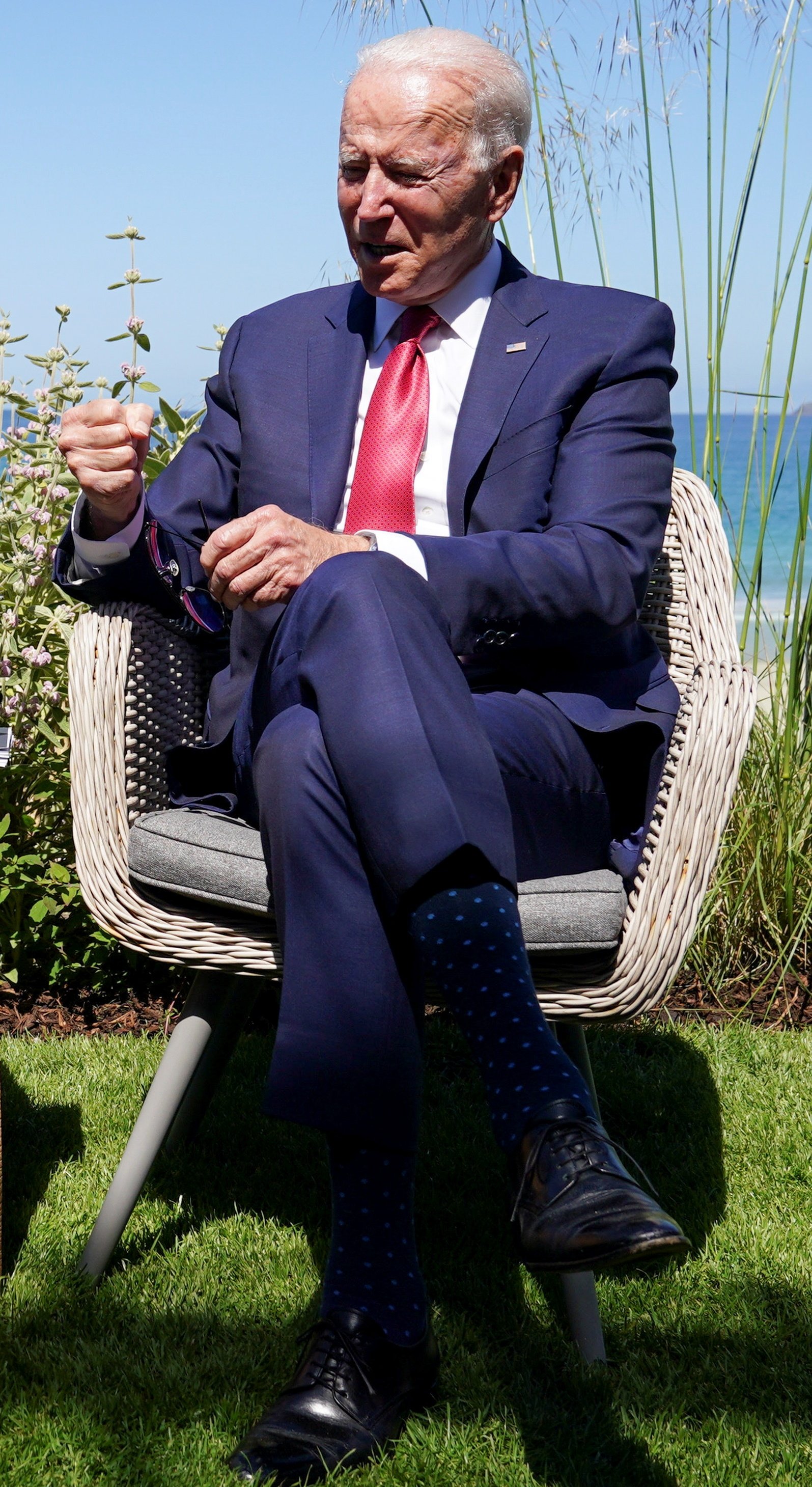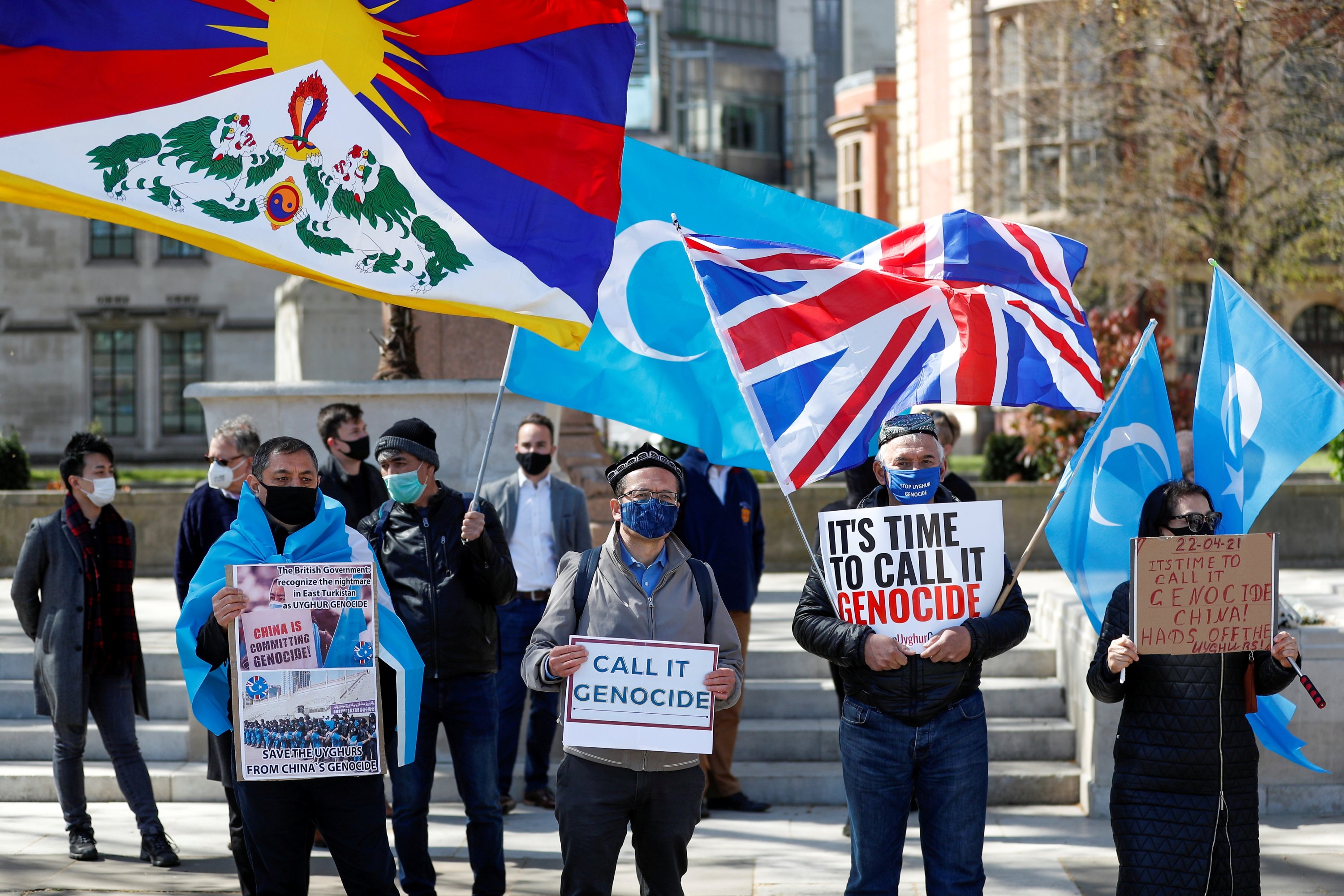© Turkuvaz Haberleşme ve Yayıncılık 2024
The world's richest democracies are planning a multi-trillion-dollar infrastructure program that targets developing nations, similar to China's Belt and Road initiative.
The Group of Seven (G-7), whose leaders are meeting in southwestern England, has been searching for a coherent response to the growing assertiveness of Xi after China's surging economic and military rise over the past 40 years.

U.S. President Joe Biden and other G-7 leaders hope their plan, known as the Build Back Better World (B3W) initiative, will provide a transparent infrastructure partnership to help narrow the $40 trillion needed by developing nations by 2035, the White House said.
"This is not just about confronting or taking on China," a senior official in Biden's administration said. "But until now we haven't offered a positive alternative that reflects our values, our standards and our way of doing business."
The G-7 and its allies will use the initiative to mobilize private-sector capital in areas such as clean energy and climate, health and health security, digital technology and gender equity and equality, the White House added.
It was not immediately clear how exactly the plan would work or how much capital it would ultimately allocate.
China's Belt and Road Initiative (BRI) scheme, which President Xi Jinping launched in 2013, involves development and investment initiatives that would stretch from Asia to Europe and beyond.
More than 100 countries have signed agreements with China to cooperate in BRI projects like railways, ports, highways – such as Montenegro's road to nowhere – and other infrastructure.
Critics say Xi's plan to create a modern version of the ancient Silk Road trade route to link China with Asia, Europe and beyond is a vehicle for the expansion of Communist China. Beijing says such doubts betray the "imperial hangover" of many Western powers that humiliated China for centuries.
The leaders of the G-7 – the United States, Canada, Britain, Germany, Italy, France and Japan – want to use their gathering in the seaside resort of Carbis Bay to show the world that the richest democracies can offer an alternative to China's growing clout.
The reemergence of China as a leading global power is considered to be one of the most significant geopolitical events of recent times, alongside the 1991 fall of the Soviet Union that ended the Cold War.
China in 1979 had an economy that was smaller than Italy's, but after opening to foreign investment and introducing market reforms, it has become the world's second-largest economy and is a global leader in a range of new technologies.
The U.S. official said until now, the West had failed to offer a positive alternative to the "lack of transparency, poor environmental and labor standards and coercive approach" of the Chinese government that has left many countries worse off.
According to a Refinitiv database, as of mid-last year, more than 2,600 projects at a cost of $3.7 trillion were linked to the BRI, although the Chinese Foreign Ministry said last June that about 20% of projects had been seriously affected by the COVID-19 pandemic.
As part of the G-7 plan, the United States will work with the U.S. Congress to supplement existing development financing and to "collectively catalyze hundreds of billions of dollars of infrastructure investment," the White House said.
Biden made "forceful comments" to G-7 leaders about the need to make a strong statement about what Washington and rights group say is the use of forced labor in China, but there was a "spectrum of how far different countries are willing to go" in their criticism in a final communique from the three-day summit, another U.S. official said.
The United States has pushed for specific language in the communique about alleged forced labor in China's Xinjiang region, officials said.
United Nations experts and rights groups estimate over a million people, mainly Uyghurs and other Muslim minorities, have been detained in recent years in a vast system of camps in Xinjiang, where Amnesty International says Uyghurs live in a "dystopian hellscape."

China denies all accusations of forced labor or abuse. It initially denied the camps existed, but has since said they are vocational centers and are designed to combat extremism. In late 2019, China said all people in the camps had "graduated."
The Chinese Foreign Ministry did not immediately respond to a request for comment.
